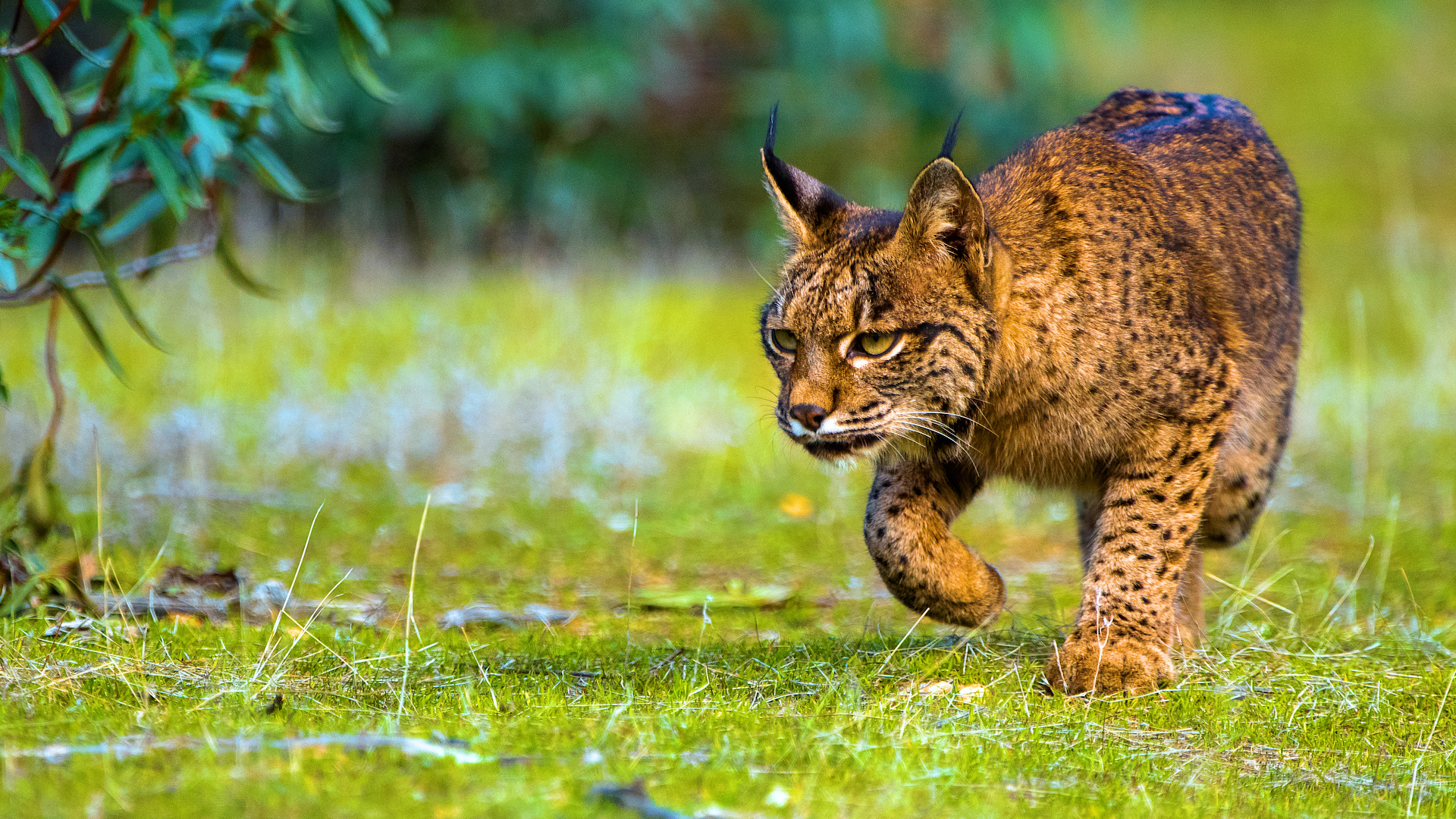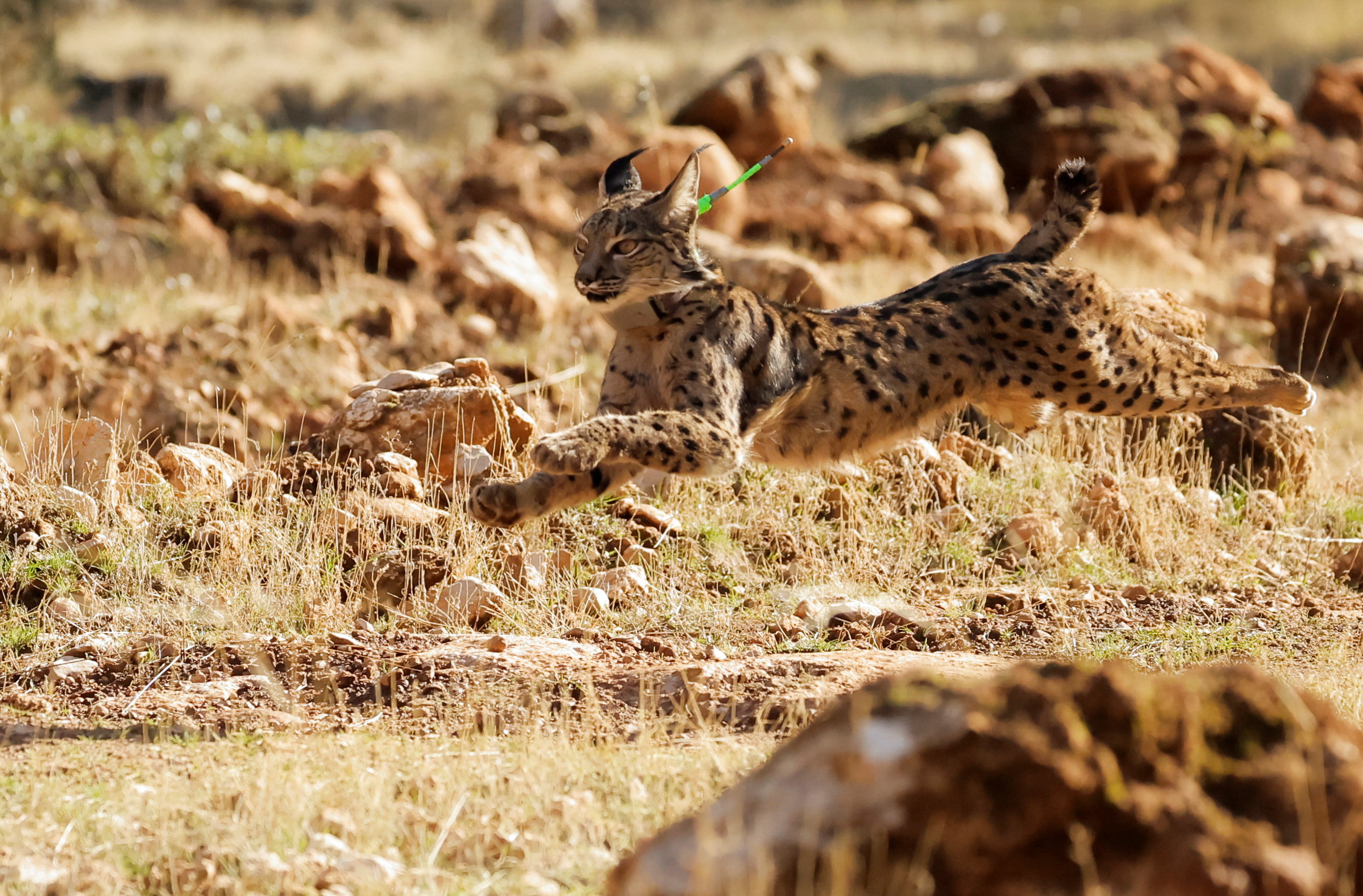
Hidden among the rolling, grassy hills of southern Spain live some of Europe's most elusive - and endangered - creatures.
The Iberian lynx once used to roam the Iberian peninsula in its thousands, silently stalking prey and avoiding humans.
But by the turn of the century fewer than a hundred remained, becoming the world's most endangered cat.
Now, an ambitious effort initiated by the World Wide Fund for Nature (WWF) has managed to bring the species back from the brink of extinction.
RAZOR's Reya El-Salahi travelled to the Sierra Morena mountains to see how it all works.
Nearly wiped out
By 2002, only 94 lynx remained in southern Spain and neighboring Portugal
There are many reasons why the population fell so drastically, says Ramon Perez de Ayala, the lynx project lead at WWF.
The big cat was hunted by humans, its natural habitat was steadily destroyed and several illnesses took hold in the population of its favorite food - the rabbit.
Many were also killed in road accidents as Spain expanded its transport network, says Perez de Ayala.
But 20 years on, its numbers have rebounded, hovering at around 1,300.
More than 22 organizations and hundreds of people across Spain and Portugal are now involved in programs which include captive breeding and public awareness campaigns.

A female Iberian lynx named Solera is released with other four lynxes, as part of the European project 'Life Lynx
Connect'. /Jon Nazca/Reutes
Back from the brink
The first step was to drastically boost the species' main food source. Rabbits are released into concrete pipes laid underground that serve as warrens. They are also regularly checked for signs of disease.
Lynxes were then released in areas where there was a known population of breeding felines.
Another challenge was working out how to count the remaining lynx population. The initial census found fewer than a hundred, and 70 of those were in these hills.
Monitoring is still a key part of the work. Wildlife workers sometimes go through the lynx's fecal matter to check that the animal is healthy.
They are also tracked in the wild with GPS tags.
A lifelong effort
But it's not just about maintaining the peninsula's delicate ecological balance.
For many like Perez de Ayala saving the lynx is a personal mission.
The conservationist breaks down in tears as he tries to explain what the cat's incredible rebound means to him.
"If they told us 20 years ago that we would be here today...we wouldn't have trusted them," he says.
"I've spent my entire life working on this. Hopefully, I will retire with the lynx safe."
Back from the brink
The first step was to drastically boost the species' main food source. Rabbits are released into concrete pipes laid underground that serve as warrens. They are also regularly checked for signs of disease.
Lynxes were then released in areas where there was a known population of breeding felines.
Another challenge was working out how to count the remaining lynx population. The initial census found fewer than a hundred, and 70 of those were in these hills.
Monitoring is still a key part of the work. Wildlife workers sometimes go through the lynx's fecal matter to check that the animal is healthy.
They are also tracked in the wild with GPS tags.
A lifelong effort
But it's not just about maintaining the peninsula's delicate ecological balance.
For many like Perez de Ayala saving the lynx is a personal mission.
The conservationist breaks down in tears as he tries to explain what the cat's incredible rebound means to him.
"If they told us 20 years ago that we would be here today...we wouldn't have trusted them," he says.
"I've spent my entire life working on this. Hopefully, I will retire with the lynx safe."

No comments:
Post a Comment